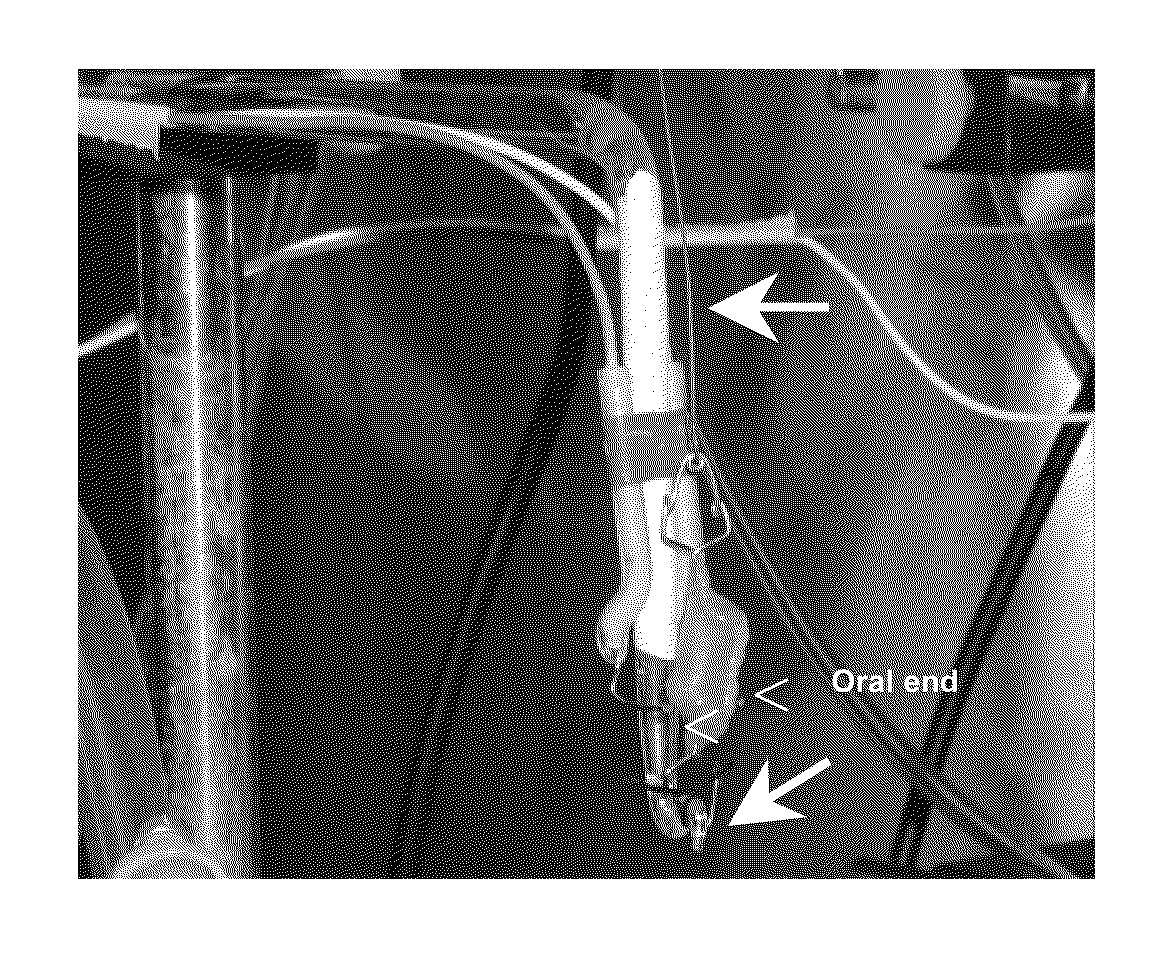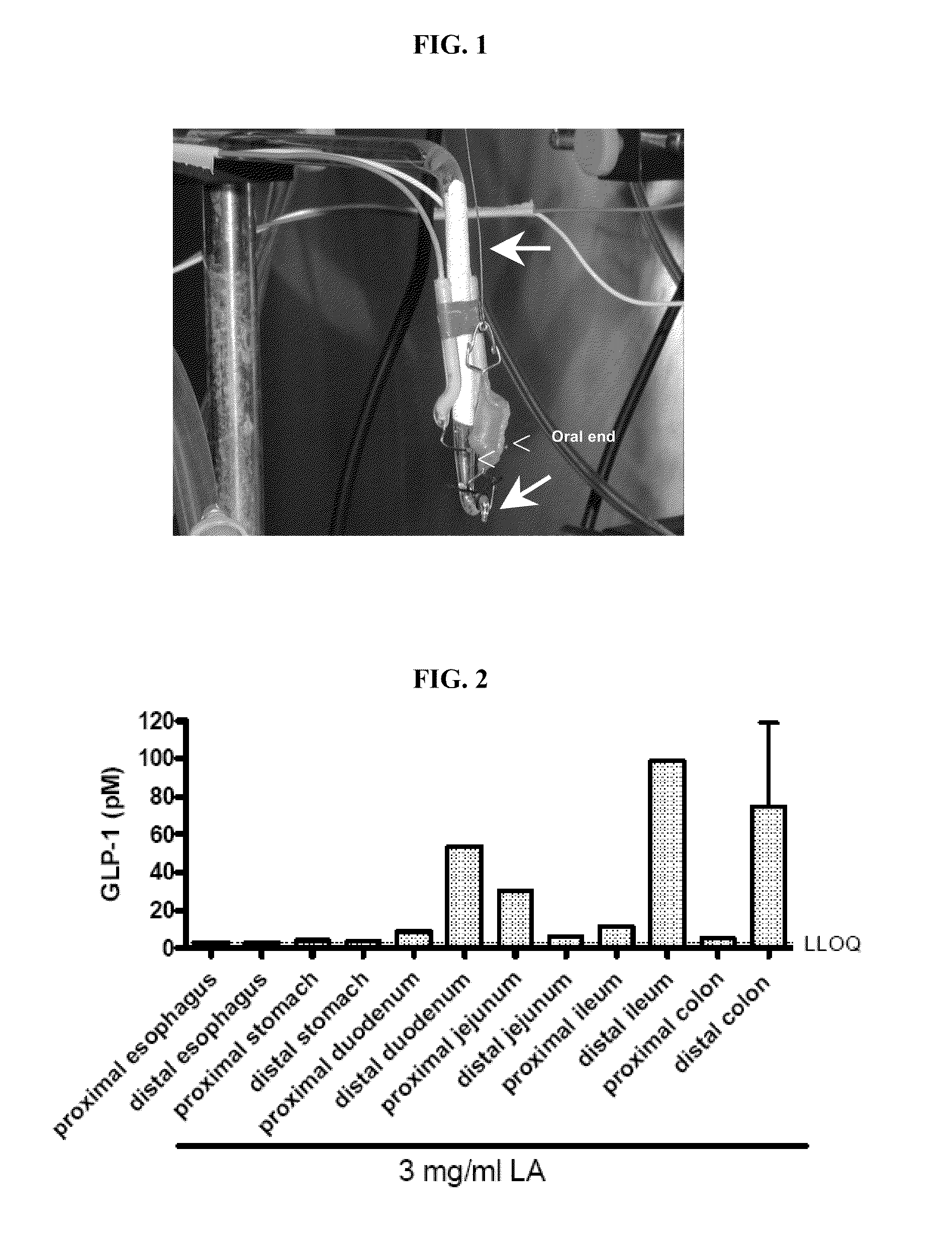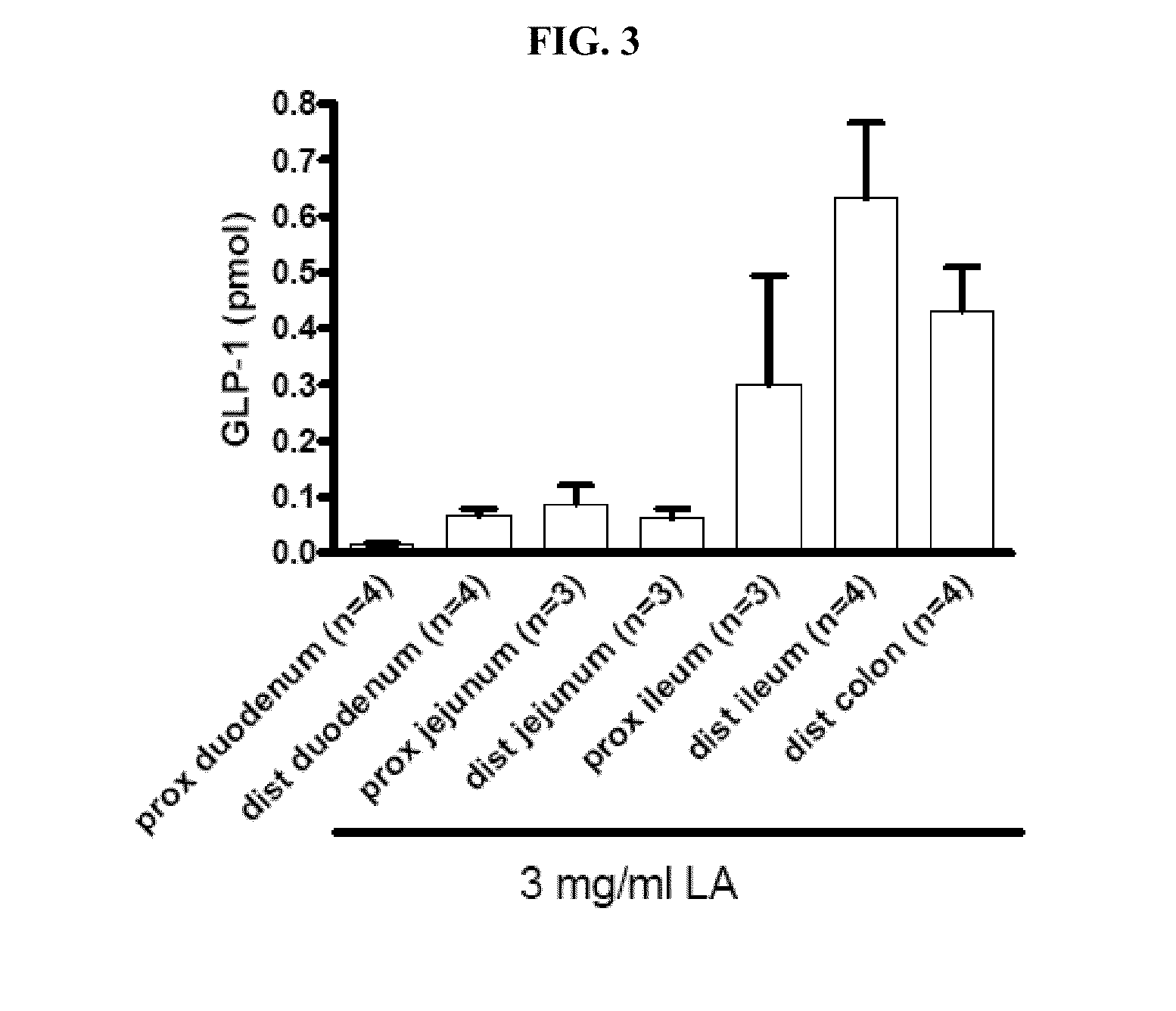Stimulation of Satiety Hormone Release
a satiety hormone and release technology, applied in the field of stimulation of satiety hormone release, can solve the problems of increasing morbidity and mortality
- Summary
- Abstract
- Description
- Claims
- Application Information
AI Technical Summary
Benefits of technology
Problems solved by technology
Method used
Image
Examples
example 1
Measurement of GLP-1 Release from Isolated Small Intestine
[0049]Female Sprague-Dawley rats, 8-12 weeks weighing 250-300 g were euthanized by CO2 and at least 17 cm of distal ileum was immediately dissected starting at the ileocecal junction. Intraluminal contents were flushed with warm modified Krebs Ringers bicarbonate (KRB) buffer and intestines placed into 50 mL tubes containing oxygenated, cold KRB buffer. Intact segments (1.5 cm) of rat distal ileum were oriented longitudinally, with the oral end fixed in the organ chamber between bipolar stimulating electrodes and the aboral end attached to a solid-state force transducer and submerged in a 10 ml-chamber containing KRB at 37° C. and constantly aerated with 95% O2 / 5% CO2 (FIG. 1). The image in FIG. 1 shows the location of electrodes tips (arrow heads) relative to the ileum which is mounted with oral end closest to the electrode and held under tension between a glass hook and wire to force transducer (arrows). The entire assembly...
example 2
Measurement of GLP-1 Release Under Electrical Stimulation Conditions
[0055]A total of eleven electrical stimulation conditions were selected for assessment. The results are shown as the difference in absolute change in GLP-1 concentration (FIG. 5), and as a percentage (FIG. 6), relative to control segments of ileum from the same rats incubated in LA. The data represented are consistent for seven electrical stimulation conditions. As provided in FIG. 6, eight of the conditions increased GLP-1 release over that expected when incubated in LA alone, normalized to 100%. As provided in FIG. 5, eight conditions resulted in an increase in the concentration of GLP-1. As provided in FIG. 5, 0.7 V 0.15 Hz 300 ms increased GLP-1 above the concentration in response to LA alone, and in FIG. 6 14V 4 Hz 5 ms increased the percentage of GLP-1 above LA normalized to 100%. As provided in FIGS. 5 and 6, two conditions did not increase GLP-1 above LA as shown by either analysis. These are 14V 0.4 Hz 5 ms...
PUM
| Property | Measurement | Unit |
|---|---|---|
| frequency | aaaaa | aaaaa |
| voltage | aaaaa | aaaaa |
| frequency | aaaaa | aaaaa |
Abstract
Description
Claims
Application Information
 Login to View More
Login to View More - R&D
- Intellectual Property
- Life Sciences
- Materials
- Tech Scout
- Unparalleled Data Quality
- Higher Quality Content
- 60% Fewer Hallucinations
Browse by: Latest US Patents, China's latest patents, Technical Efficacy Thesaurus, Application Domain, Technology Topic, Popular Technical Reports.
© 2025 PatSnap. All rights reserved.Legal|Privacy policy|Modern Slavery Act Transparency Statement|Sitemap|About US| Contact US: help@patsnap.com



